story Christopher Hector photos Roslyn Neave
Back in 2009, Christoph Hess organized a seminar to follow on from the Bundeschampionate, and invited the creme de la creme of German riders, trainers, judges… and horses, to take part.
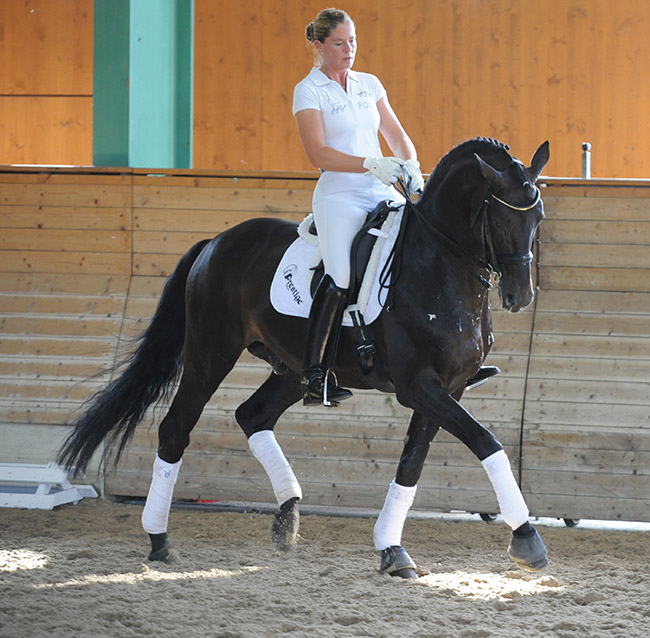
Kathrin Meyer zu Strohen and Kaiserdom
We certainly had some wonderful horses to observe. Kathrin Meyer zu Strohen, had won the Six Year old Dressage Bundeschampionship, riding the Trakehner stallion, Kaiserdom (Van Deyk / Gajus). It’s exciting to see how the combination has been developing.
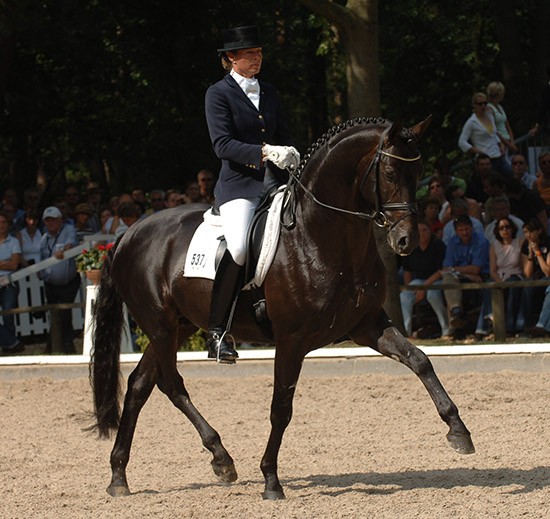
Kaiserdom and Kathrin winning at the Bundedchampionat in 2005
Kathrin’s husband, Hans-Heinrich, on the mike:
“When you have stallions, you have more problems in schooling… Bend him round the inside leg. We are schooling the body of the stallion.”
In the canter, Kathrin shows a real überstreichen, not a quick momentary flick, but a sustained release of the rein for four or five strides, and then the horse is back in hand.
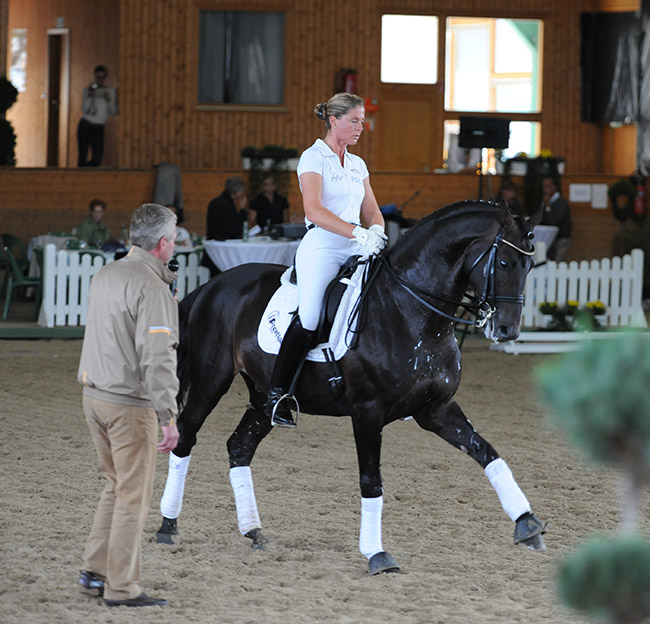
Hans-Heinrich approves of his wife’s pirouette: “Super pirouette, the neck under control, good in the hand. PRIMA! In the flying change, he lost a little the speed. Forward again, forward again – train the canter and then you have the movement.”
The horse shows passage: “He you see what we have in our system. The clear half halt. The clear rhythm. School the body and the head of the horse and then they can learn all the movements. Don’t train the piaffe and the passage too early. First the basics, the rhythm clear, the body under control, then it comes easy, then you just play… that is fabulous piaffe, now he must have a rest. We are lucky, they are breeding such super horses these last few years.”
story continues below the advertisement
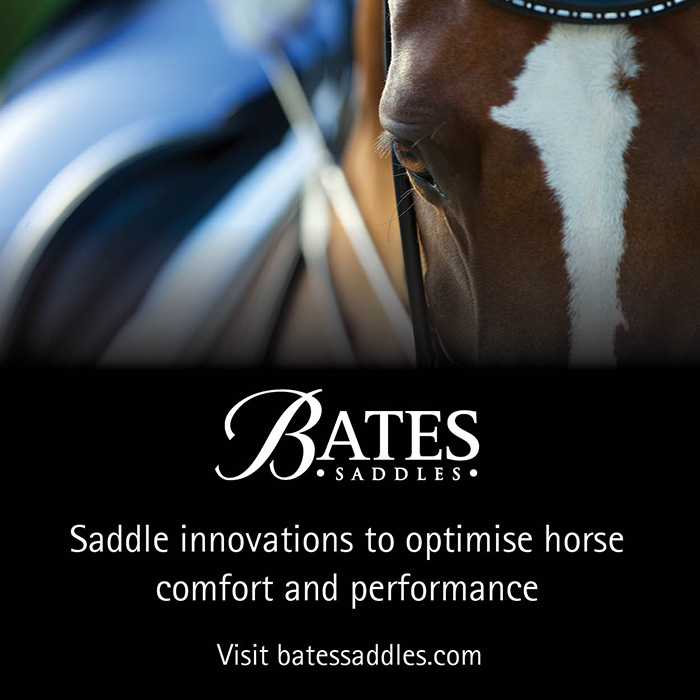
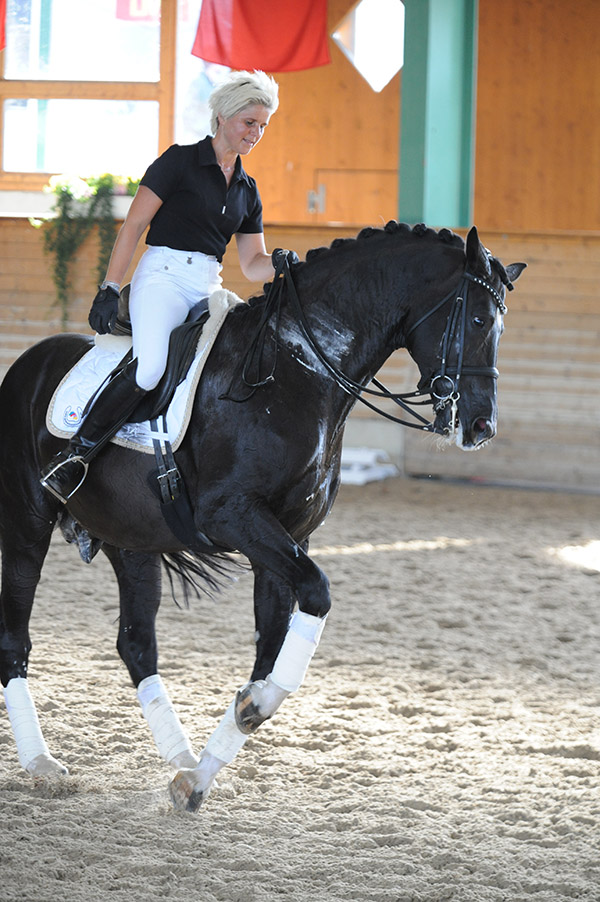
Into the arena came Uta Gräf, this time riding her Holsteiner, Le Noir, by a son of Landgraf out of a grand-daughter of Cor de la Bryère. This horse has competed successfully at Prix St Georges and Intermediaire I level, despite not being bred, or for that matter, conformed to be a dressage horse. The pair had put on a demonstration on the Sunday at the Bundeschampionate, with Christoph drawing attention to the fact that the rider was getting most of the FEI movements done while riding one handed, but was she getting them done well? It reminded me of one of the classic lines from Joyce Carey’s famous novel, The Horse’s Mouth, where the artist hero Gully Jimson observes it is ‘like farting Annie Laurie through a keyhole. It may be clever but is it worth the trouble?’
Still Christoph loves it: “Phillipe Karl is always criticizing our riders, every day I get an email saying we are on the wrong way with our theory. Uta is a very good example of why this guy is wrong. Look there is no using hands against the bit – she is using hands to feel the happiness of the horse. The hands are important to talk to the horse, to listen to the horse, the hands are a mirror to the soul of the horse.”
And yes, it was a dear dear very cooperative horse, but was it great dressage?
Obviously in this matter I beg to differ from my friend Christoph, who is of the opinion that: “This for me is not circus, this for me is the classical way of riding. I can watch this kind of riding day or night.”
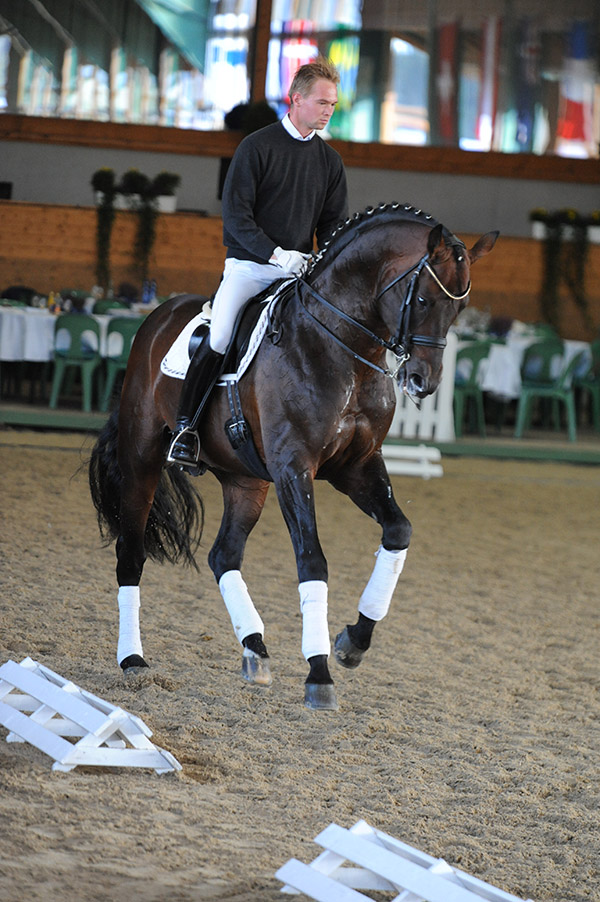
Samba Hit was a star at the Bundeschampionate, when he was a reserve champion in the Three Year Old stallion class in 2001.
Hans Heinrich and Poetin, also Bundeschampions
The year before his full-sister, Poetin had won the championship for 3 year old mares and geldings – two years later she was to win both the 6 year old championship and the World Championship.
Samba Hit has progressed steadily through the ranks, brilliantly ridden by Christian Flamm, with the training assistance of Hans-Heinrich Meyer zu Strohen. Now eleven years old, he is on his way to Grand Prix.
Hans-Heinrich says it was not easy: “For some horses, when they are as huge as this, it takes longer to get everything together, to get the activity and the bend. When you are training a stallion, you have no chance to train him 365 days a year, there is a long time when he is breeding and you can just ride him – you can’t train him.”
“It is not easy to get this huge canter more together, the rider must have a top seat.”
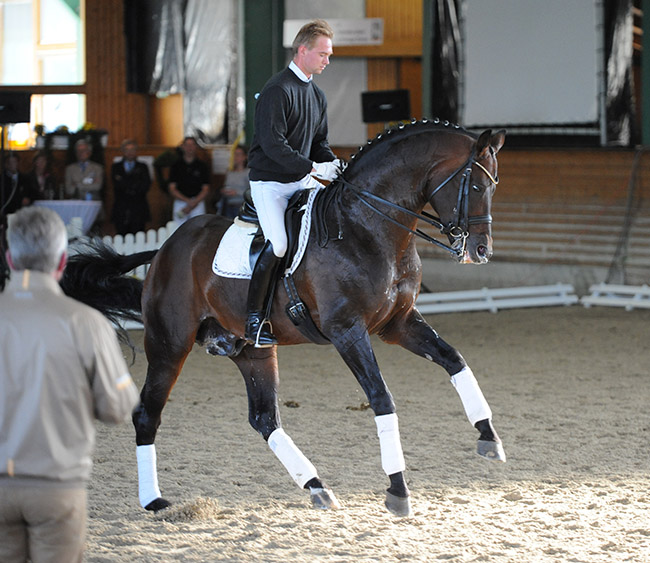
For all that it is a lovely big canter and super flying changes. Still Hans-Heinrich is hard to please: “You can see the jump and the straightness are good but we need more balance, we have to train the horse a little bit going forward, so we don’t get it too short.
We need to train the changes a little more out of collection, to get more balance and expression. To get collected canter is hard work for this horse but you will see what is super is that the hindquarters are coming shorter and shorter and more under himself. We must wait a little to get it more under control and more on a place. If we try to force the horse to go smaller, he will lose the balance and the rhythm, and then it is hard for the horse and he gets angry and we lose everything. You can train a horse with activity, but you should not always be pushing.”
Training the Young Rider…
The next rider into the clinic is from one of those famous German riding families: Fabienne Lütemeier is the daughter of German international representative, Gina Capellman-Lütemeier and her aunt is former World Champion, Nadine Capellmann, and she rides very stylishly indeed on her De Niro gelding D’Agostino.
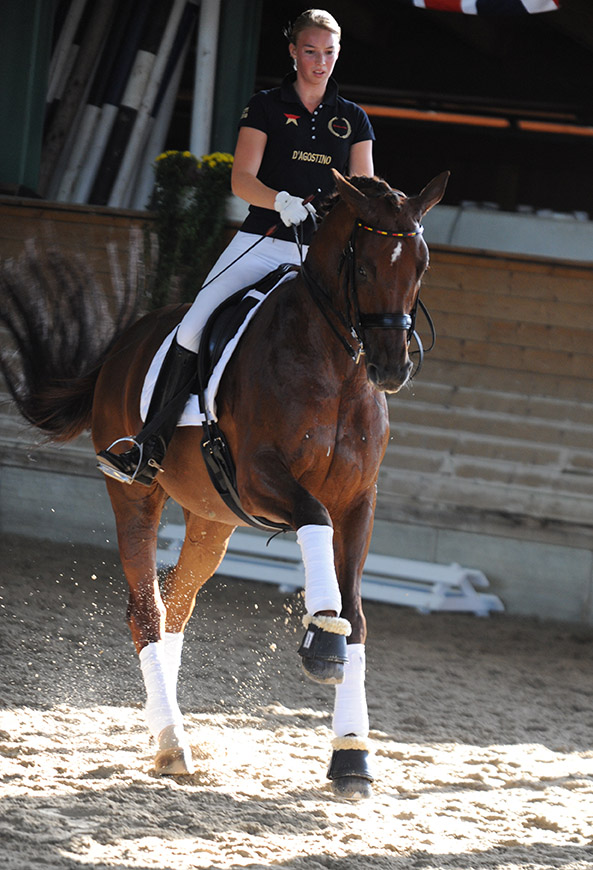
This time, Hans-Heinrich, who is the German Young Rider coach, is paying tribute to the qualities of the young rider. “As a trainer, I prefer riders who say we will. You must have a horse AND a rider – if the rider is not strong enough, you lose the competition. At the last European Young Rider Championships, Fabienne was second two times and it was too much for her. I will win the next one. It was very hard, the one who had beaten her was just before her… “oh she has a 77, I must make 78’. She willed this and she did it.”
“Just look to the quarters of the horse, the horse is really stepping under. Don’t forget what we’ve said: walk, trot, canter – not trot, trot, trot.”
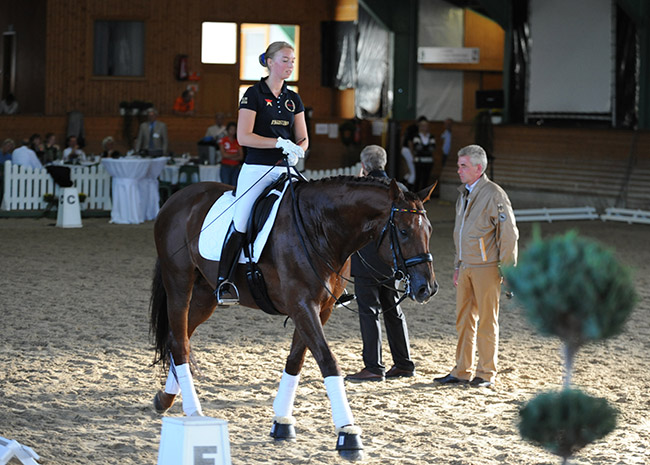
The work from the young rider and her horse is wonderful. Forward, athletic, relaxed. The entire Seminar has been a wonderful showcase for a training method that is simple, logical and horse friendly. A wonderful opportunity to look at the way breeding, judging, training – and showing – all combine to produce the horses that we are seeing today: horses of such enormous natural ability and presence.
story continues below the advertisement
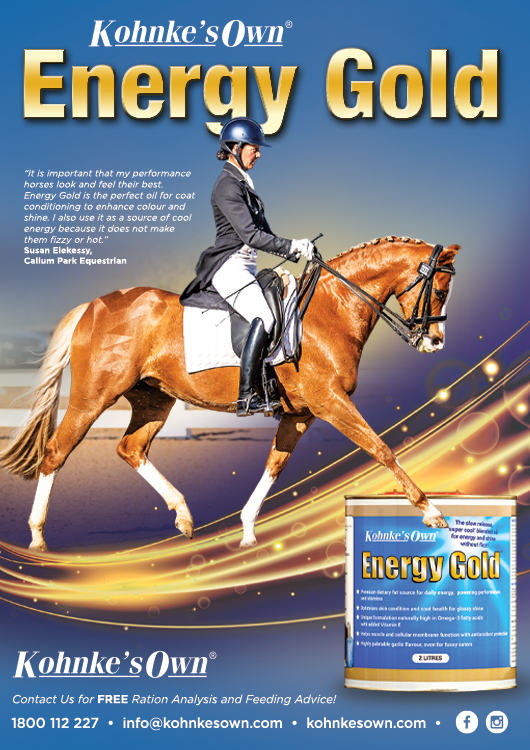
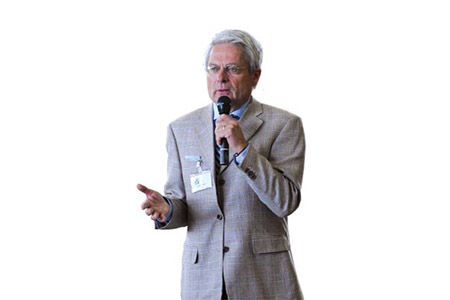
Dietrich Plewa: The Way from Advanced to Grand Prix level
Another of the key note addresses came from the international judge, and former Grand Prix rider, Dr Dietrich Plewa.
He started out by referring to the ‘classical v non-classical’ debate that rages in the world of dressage, concluding that while there were many roads to Rome, ‘the only way to correctly train is the way that respects the horse’s body and soul.’
“To come to Grand Prix we need an experienced rider and a talented horse. We can look for a horse like Totilas or Parzival, but don’t even too disappointed if you can’t find one. Even a horse with a long back and neck, like Warum Nicht, can come to Grand Prix.”
Dr Plewa started by looking at one of the defining movements of Grand Prix, the Piaffe. “This is the highest collection, it is similar to trot but in the same place with a short moment of suspension.”
The important criteria are:
- 1. Beat – it must be a clear two beat diagonal movement, not slow / hasty. There should be an impression of a swinging movement.
- 2. Carrying weight on the hindquarters – the horse must visibly lower its hindquarters.
- 3. Cadence
- 4. Tendency (slight) to go forward. In 15 steps there can be up to two hoof prints forwards. Backwards steps cannot be tolerated. In the tests for young Grand Prix horses, from 8 to 10 years, the horse can move up to a metre forwards.
- 5. Exactitude – there must be the exact number of steps with the front legs put down in the same spot, not forward or back, not narrow in front and wide behind, or wide in front and narrow behind. The horse does not show piaffe before or after being asked.
In the piaffe, the horse should show supple contact – quite often the horses are stiff at the poll, or are over-bent, or show tension through an open mouth.
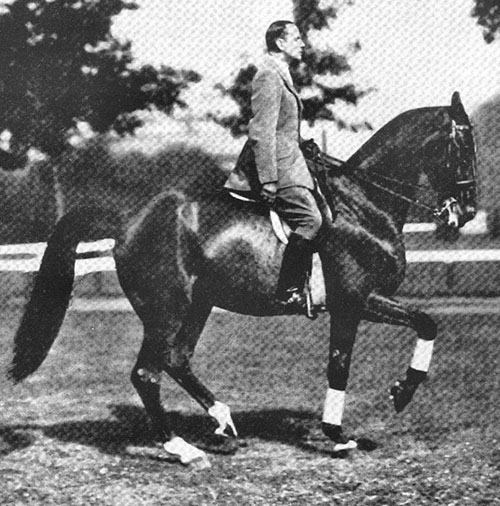
Look at Richard Watjen – this is perfect piaffe. Who says German horses can’t piaffe?
Passage – Criteria
- 1. Beat: A clear two beat, slower in comparison with collect trot, with a steady tempo.
- 2. Elevation
- 3. Carrying weight: The horse must give the impression that it is carrying weight and swinging under its body.
- 4. Exactitude: Totally balanced and straight, no wide or swinging hindquarters
Transitions from Piaffe to Passage to Piaffe
Criteria: 1. Beat; 2. Fluency; 3. Cadence
Transitions from collected to extended trot, from walk to passage or piaffe, and vice versa. Criteria: 1. Fluency; 2. Rhythm; 3. Keeping impulsion
Flying Changes – Criteria
Ground cover – a big jump, not late behind; 2. The Speed – constant rhythm of canter; 3. Straightness 4. Uphill Tendency – produces expression; 5. Relaxedness – a relaxed, swinging back. No twisting tail or ears back; 6. Obedience 7. Exactitude
Canter Pirouette – Criteria
- 1. Balance – not wide behind; 2. Control – not wide behind; 3. Carrying weight on the hindlegs – uphill tendency, visible bend of the haunches; 4. Flexion / bend; 5. Impulsion; 6. Beat – when the horse is carrying more weight on the hindquarters it is harder to maintain the beat; 7. Size – the smallest circle possible; 8. Exactitude – for a half pirouette, 3 – 4 strides, for a full pirouette, 6 – 8 strides.
Hans-Heinrich is commenting on Kathrin’s work: “In piaffe, what is most important is a clear two beat rhythm, later the horse can give a better impression, but first the rhythm.”
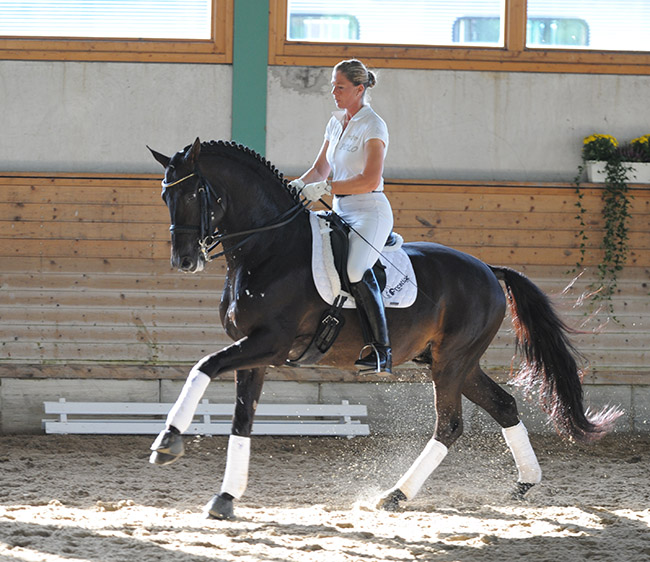
“It is a wonderful picture, an open poll, the horse stretched, this is asking in exactly the right way. This is a well relaxed horse, showing positive tension and harmony.”
story continues below the advertisement
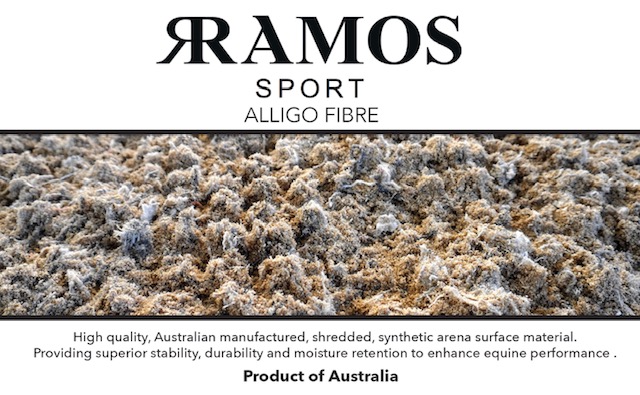
And still the wonderful horses keep coming. Dietrich Plewaa introduces Christoph Koschel riding the 11 year old Fantomas (Florestan / Pilot). According to Christoph: “I got him in March this year. When we got him he was trained to Prix St Georges, but I went straight to Grand Prix and this is his first Grand Prix season.”
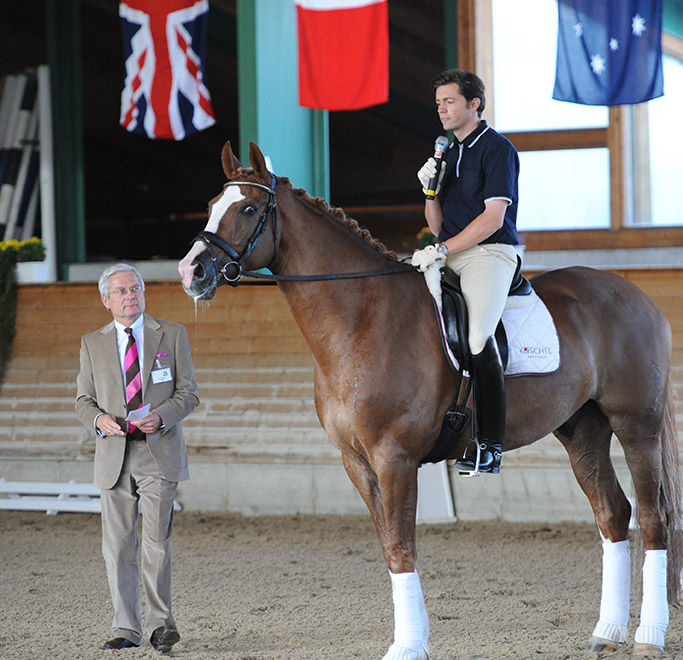
According to Dietrich: “We see we don’t need a double bridle to train this horse. Now Christoph is developing the collected canter we need for the half pass (we should note that the horses had all been warmed up outside before being brought into the arena) but there is no changing of rhythm and the horse keeps the impulsion. You see the horse is bent through its whole body with a good uphill tendency. In the changes of hand, we see a smooth contact all the time, and fluent flying changes. We judges often see in the one times changes, an ambling canter as the horse moves to a two beat rhythm. You don’t often see flying changes so fluent, so straight. This horse very well fulfils the criteria of the Training Scale: rhythm, impulsion, straight, smooth contact – able to collect. That is what we want to see, changes that are fluent, straight and with expression – without being pushed by the rider. I’m sure he could ride this movement with one hand…”
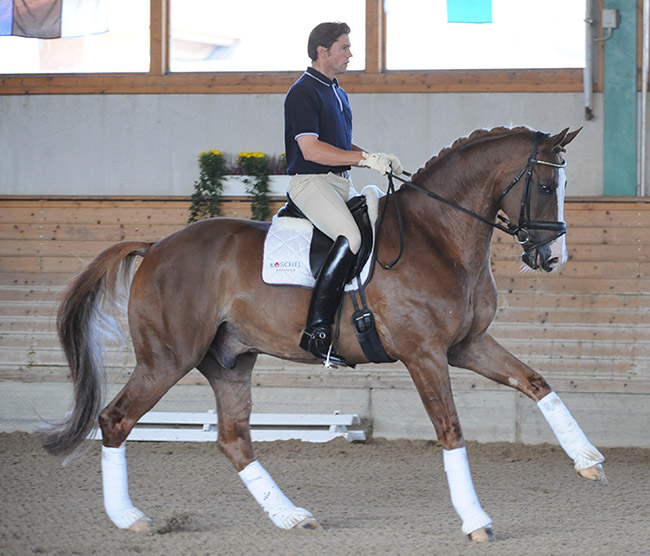
And of course, that is just what Christoph does!
They were certainly beautiful changes, but Fantomas, had an even more astonishing walk…
Dietrich points out that “often in Grand Prix we see horses with a poor walk – but this horse often gets 9s and 10s for walk. Look you could easily give a 10 for this extended walk.” And guess what? The collected walk is just as clean and defined…
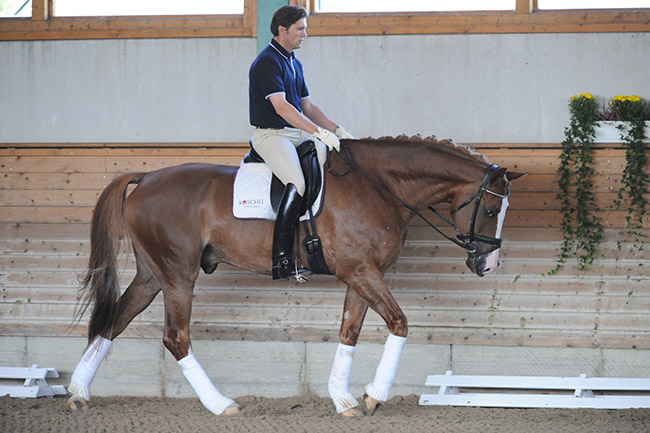
Still the stars keep rolling into the arena. We have Germany’s assistant National Coach, Jonny Hilberath, working with the enormously talented Carola Copellmann on the ten year old Trakehner stallion, Insterburg. The pair starred a few years ago at the Bundeschampionate, but last year, started out in Grand Prix.
Jonny Hilberath is one of the German secret weapons as they prepare to take back the world dressage crown. A Grand Prix rider himself, Jonny is a real horseman, and seems to have the knack of getting the best out of the riders. He is enthusiastic about Carola and her horse:
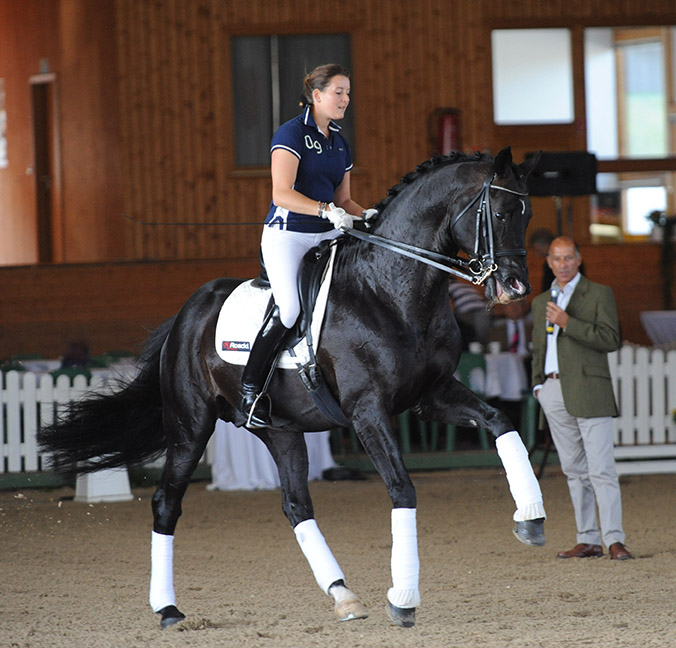
“I like a lot the natural elasticity and cadence. This horse is well-connected in his body, he must be a pleasure to ride… and this is a very attractive combination, which helps. We see that the horse trots in the same rhythm sideways as he does forward, this is not the rider, this is the horse’s own self carriage.”
Like all the trainers we’ve seen at the Seminar, Jonny is quick to give the horse a breather. “They need breaks so the horse’s body and soul can refresh.
“This horse has a natural dynamic in canter with a very good forearm. This is the ideal canter, not too big. With Insterburg, he is so naturally collected, we always have to remember to open his frame.”
Carola is riding Insterburg in a series of short half pass diagonals. Even the coach is impressed: “I would be very happy if I could ride half passes like that in my own test…”
“This horse has just started Grand Prix,” Jonny explains, “he has improved a lot over the past few months. I am very excited about the future for this couple.”
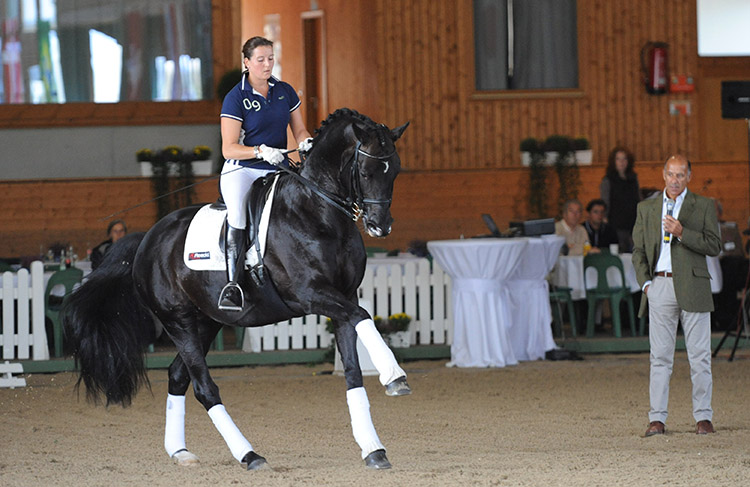
In thanking Carola for her display, Christoph remembers that the idea for this Seminar started three years ago, when we brought a group of Australians on our THM Sporthorse tour to Warendorf: “Thank you Carola, and the Australians, because three years ago, we had Carola and her horse, and we ran a little seminar for the Australians, and it worked so well, we thought, why is it just for Australians? And that is how we are all here now.”
Dear Christoph, when the world finally emerges from this awful pandemic – can we have another Warendorf / Bundeschampionate Seminar? Please…
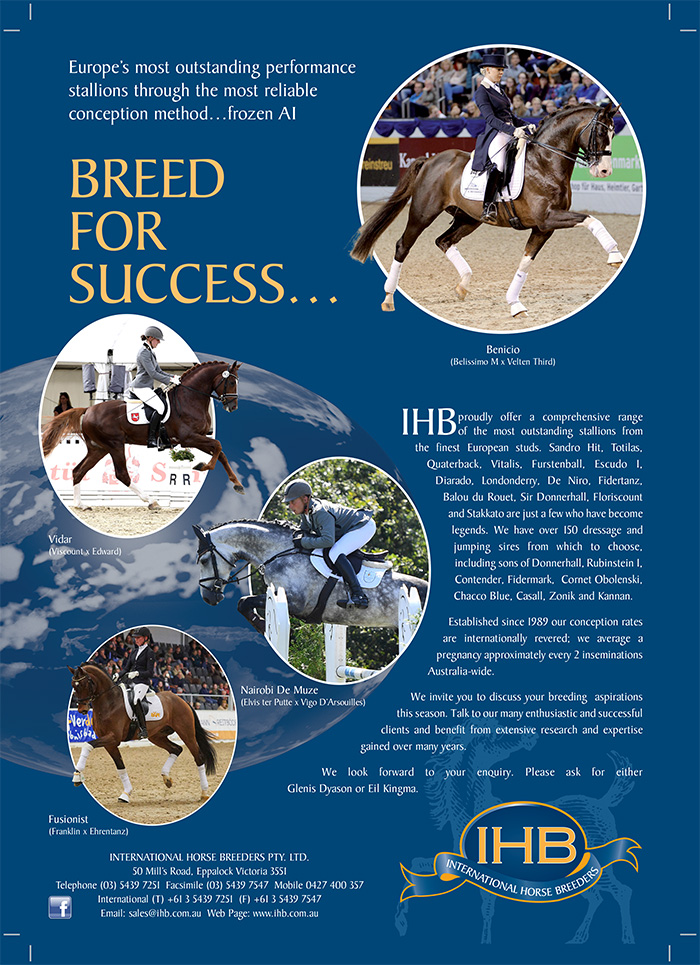

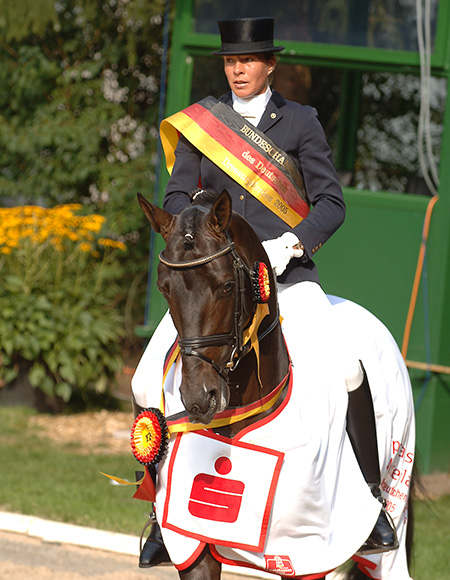
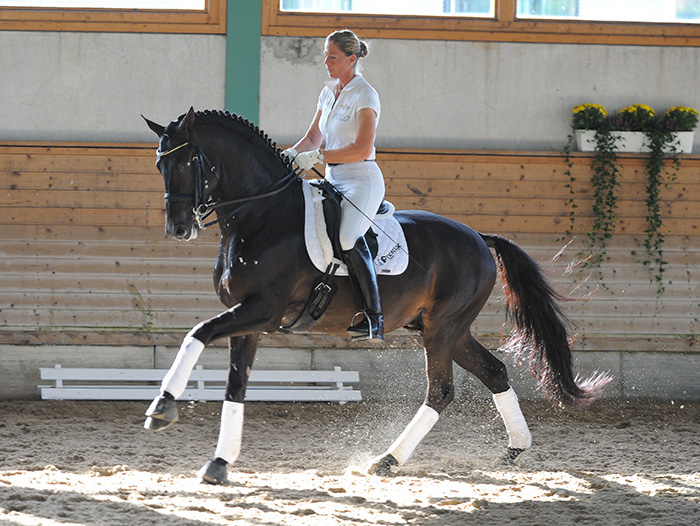
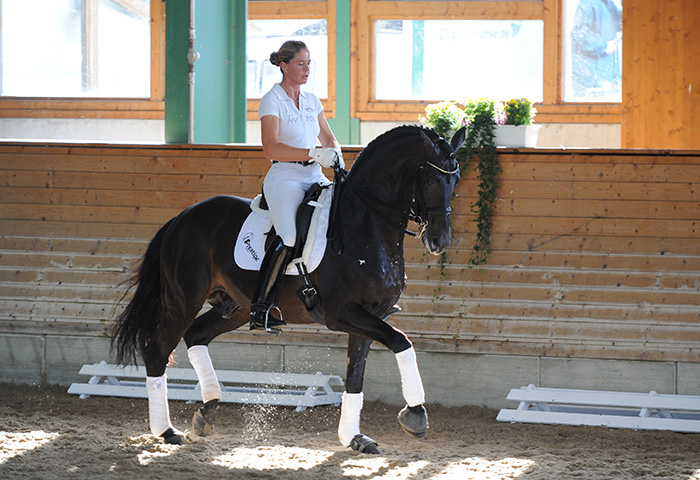
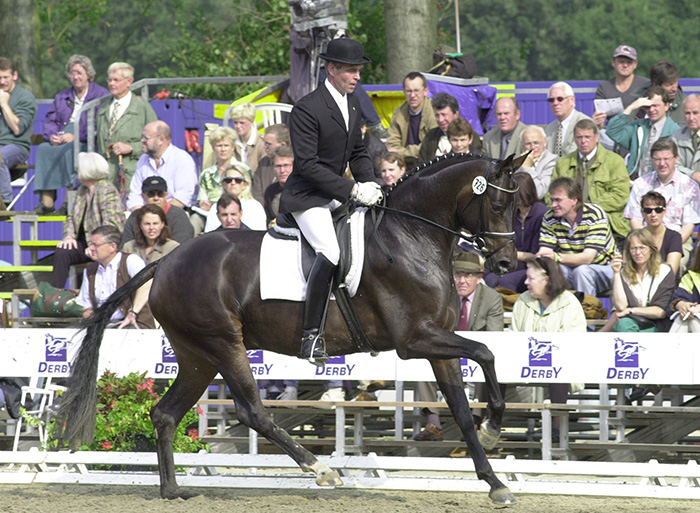
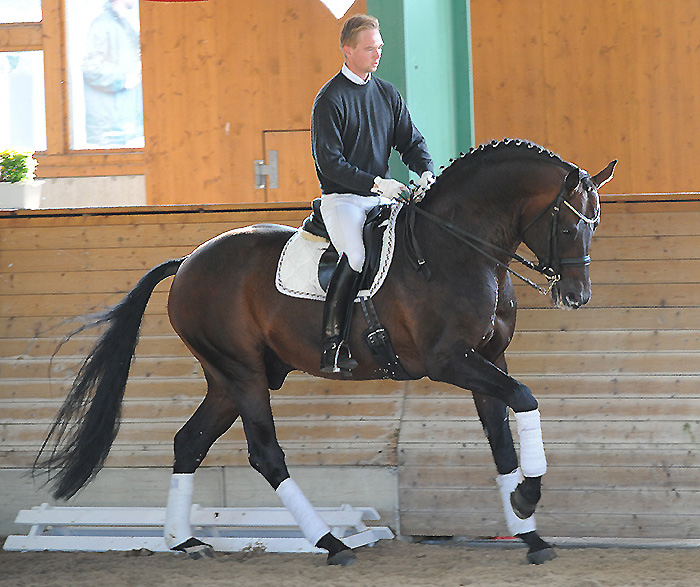
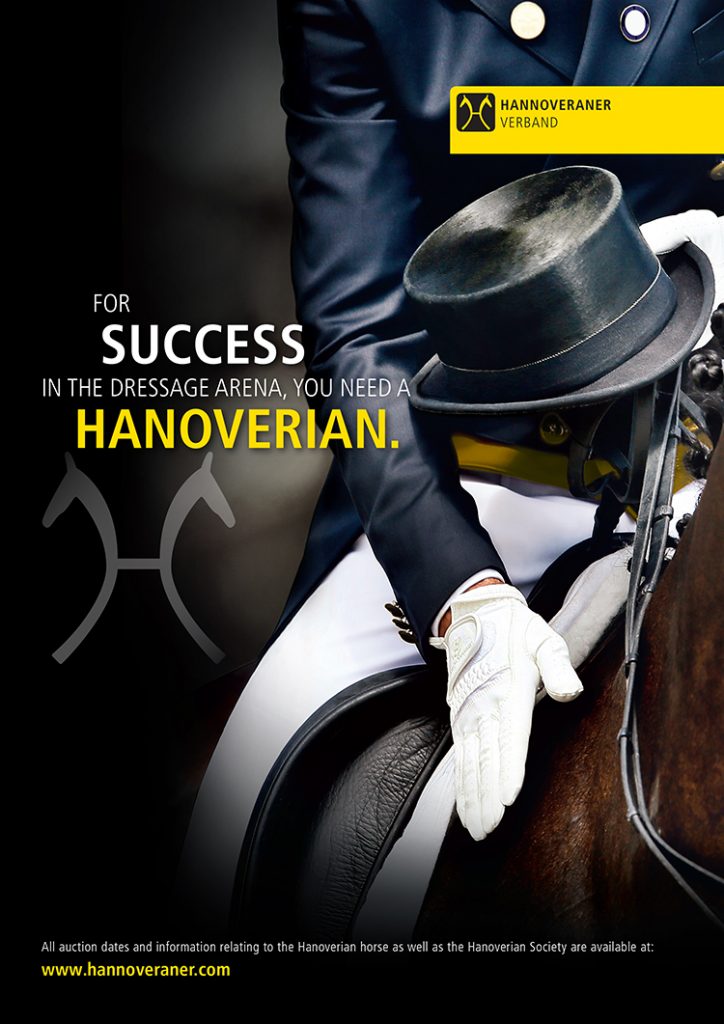
Wow ❤️